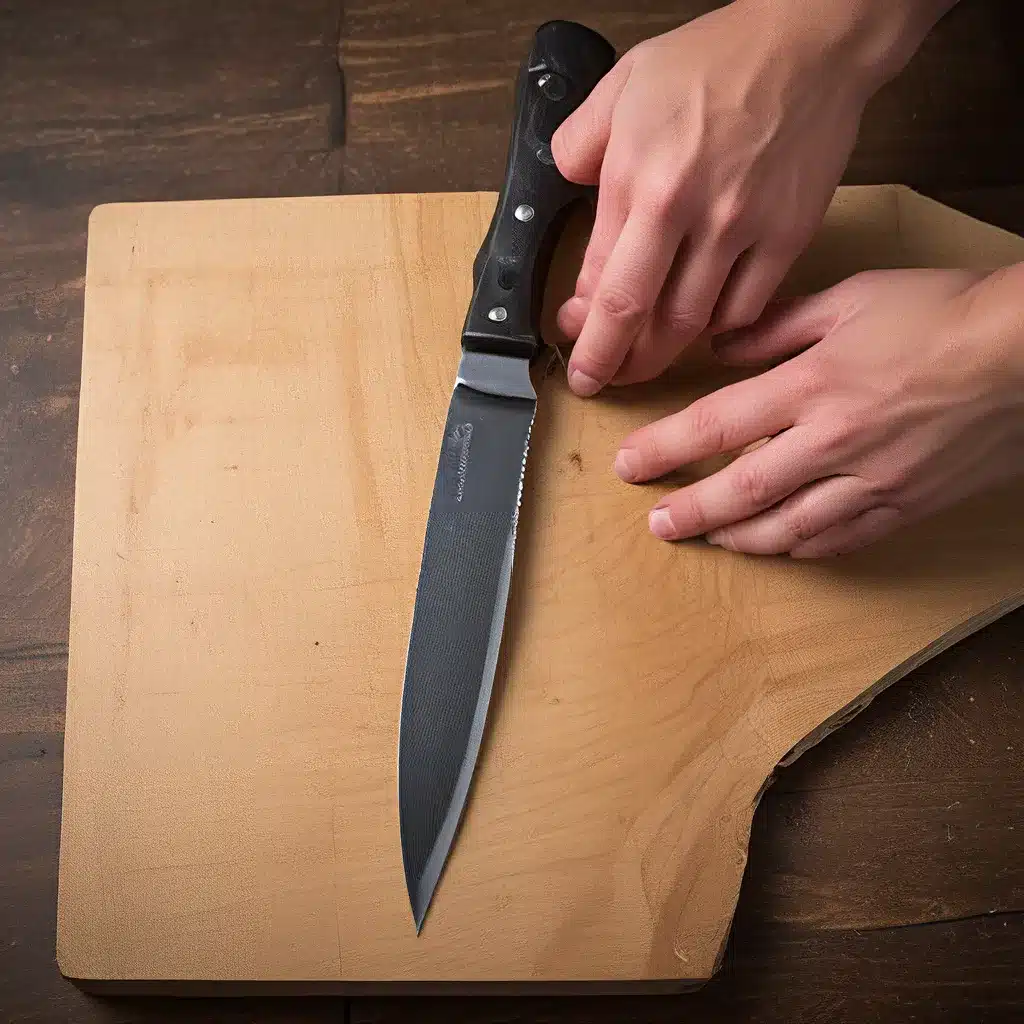
As a passionate home chef, I’ll never forget the day I nearly sliced my finger open while chopping vegetables. It was a wake-up call that reminded me just how important it is to master the fundamentals of knife safety and handling. Since then, I’ve made it my mission to become a true knife ninja, and I’m excited to share what I’ve learned with you.
Selecting the Right Knife for the Task
One of the most crucial aspects of knife mastery is knowing which knife to use for a specific job. It’s kind of like how a carpenter wouldn’t use a hammer to drive in a screw – the tools have to match the task at hand.
When it comes to knives, there’s a dizzying array of options – from the versatile chef’s knife for chopping and slicing, to the boning knife for delicately separating meat from bone, to the serrated bread knife for taming even the toughest loaf. Selecting the right knife is essential for honing your culinary skills. The key is to match the knife’s design and functionality to the specific task you’re tackling.
For example, if I’m breaking down a whole chicken, I’ll reach for my trusty boning knife with its narrow, flexible blade that allows me to precisely maneuver around the bones. But if I’m slicing into a juicy tomato, I’ll opt for the chef’s knife with its broader, sturdier blade that glides through the fruit with ease.
It’s all about understanding the unique characteristics of each knife and how they can be leveraged to tackle different culinary challenges. And let me tell you, once you start experimenting with the right knives for the right jobs, your cooking game is going to level up in a big way.
Mastering Knife Grip and Handling
Now, even if you’ve got the perfect knife for the task, it’s all for naught if you don’t know how to handle it safely and effectively. That’s where the art of knife grip and handling comes into play.
Ensuring safety while handling a knife is paramount. One of the key techniques is the claw grip, where you tuck your fingertips under and keep your knuckles facing the blade. This not only protects your fingers from the sharp edge, but it also gives you better control and precision when cutting.
Another crucial safety tip is to always keep your work surface stable and secure. Securing your cutting board to prevent slippage is a must, and you might even want to invest in a good-quality slip-resistant cutting glove for an extra layer of protection.
But knife handling isn’t just about safety – it’s also about efficiency and elegance. The way you move the knife, the angle at which you hold it, and the rhythm of your cuts can make all the difference in the world. It’s like a dance, really, where you and the knife become one, gliding through the ingredients with effortless grace.
I’ll never forget the first time I watched a professional chef in action, their knife practically an extension of their hand as they breezed through a mountain of produce. It was mesmerizing, and it’s a level of knife mastery that I’m still striving to achieve.
Maintaining Your Knives
Of course, we can’t talk about knife skills without touching on the importance of knife maintenance. A dull knife can be dangerous, as it requires more force and is prone to slipping. That’s why regularly honing and sharpening your blades with a whetstone is so crucial.
I’ll admit, when I first started out, the idea of sharpening my own knives seemed daunting. But once I got the hang of it, it became a meditative ritual that I actually look forward to. There’s something deeply satisfying about feeling that razor-sharp edge glide effortlessly through whatever I’m cutting.
And the benefits of a well-maintained knife go far beyond just safety. A sharp, well-cared-for knife will guarantee precise cuts, whether I’m slicing through a juicy tomato or portioning a tender piece of lamb. It’s the difference between a smooth, clean cut and a ragged, uneven one.
So, if you want to take your cooking skills to the next level, don’t neglect your knives. Invest in a good sharpening system, learn the proper techniques, and make it a habit to maintain your blades on a regular basis. Trust me, your meals (and your fingers!) will thank you.
Putting It All Together
Alright, now that we’ve covered the essentials of knife selection, handling, and maintenance, it’s time to put it all together and start slicing and dicing like a true pro.
Herman Knives has an amazing collection of high-quality blades that are perfect for any kitchen task. Whether you’re in the market for a versatile chef’s knife, a delicate boning knife, or a serrated bread slicer, they’ve got you covered.
But the real magic happens when you combine the right knife with the proper technique. That’s when you start to see just how much of a difference it can make in your cooking. Suddenly, those tedious prep tasks become a breeze, and you can focus on the true art of creating delicious meals.
I’ll never forget the first time I used a really sharp knife to slice through a ripe tomato. It was like cutting through butter – the knife practically glided through the fruit, leaving behind perfectly even slices. It was a revelation, and it completely changed the way I approached kitchen prep.
So, if you’re ready to take your culinary skills to new heights, I encourage you to dive in and start mastering the art of knife handling. It might take some time and practice, but trust me, it’s a journey well worth embarking on. Who knows, you might just surprise yourself and discover a hidden knife ninja lurking within!


